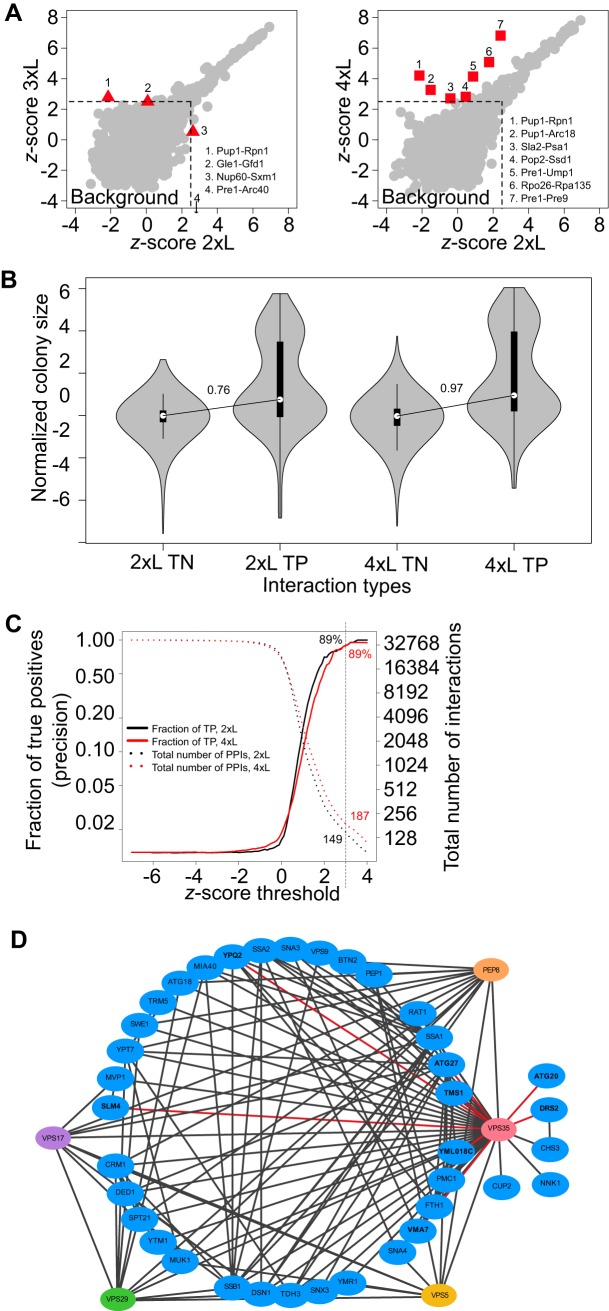Fig. 1.
Longer linkers increase signal-to-noise ratio in large-scale Protein-fragment complementation assay (PCA) screens and allow the detection of new PPIs. A, PPIs Zs (representing a quantitative deviation from the background noise) obtained in a large-scale screen using baits fused to the DHFR F[1,2] fragment with a 3xL (left) and a 4xL (right) compared with a 2xL. PPIs with a significant difference are highlighted with red triangles (3xL) and squares (4xL). B, Distribution of colony size in the DHFR PCA assay with the 2xL and 4xL. 13 baits were screened against the DHFR F[3] yeast collection (n = 3600) with both the 2xL and 4xL (26 baits total). The distribution of normalized colony sizes (interaction score, Is) is shown for a set of computationally identified most likely true negative and positive interaction partners, TN and TP respectively. The two modes of the bimodal distribution of colony sizes for the TP represent PPIs that are detected (highest mode) and those that cannot be distinguished from the background growth (lowest mode). The signal-to-noise ratio, illustrated as the difference between the medians of the TP over the TN, increases with the 4xL. C, Precision and number of detected PPIs as a function of Zs thresholds. Precision, or fraction of TP, was calculated as the ratio of TP over all positives (TP + FP) at various values of Zs for the 2xL and 4xL. A conservative threshold corresponding to a Zs of 3 is indicated by a dotted vertical line on the graph. D, Retromer PPI network. Colored nodes: retromer subunits. Blue nodes: Vps35 interaction partners. Black lines: all known PPIs between Vps35 and its interaction partners and among these interaction partners. Red lines: newly detected PPIs with Vps35 in the large-scale experiment with the 4xL and confirmed in small scale experiments.

